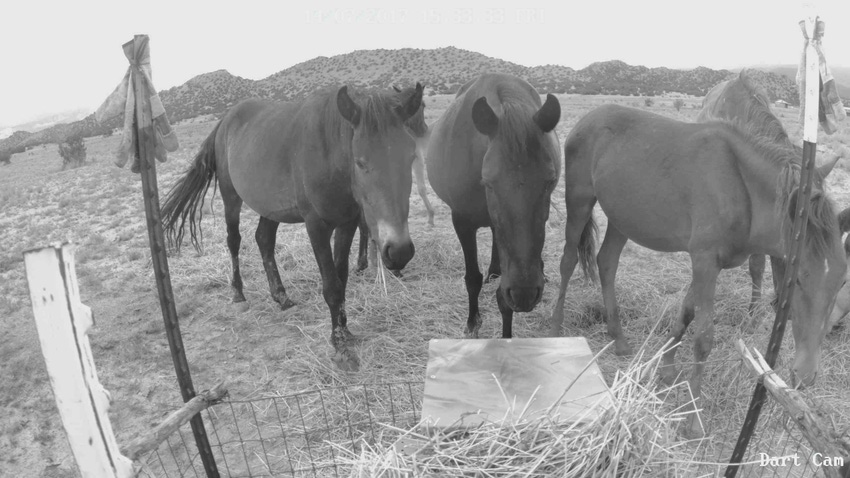Coalition seeks commonsense management of wild horses
Lack of actionable steps taken to reduce on-range numbers of horses and burros only exacerbates current overpopulation crisis.

The National Horse & Burro Rangeland Management Coalition (NHBRMC) recently submitted public testimony to the Bureau of Land Management (BLM) on the current state of the nation’s rangelands. The coalition noted that the overpopulation of horses and burros continues to threaten the health of rangelands and negatively affects the multiple uses of these public lands.
Representing more than 10 million Americans and 18 national organizations, NHBRMC includes sportsmen, livestock growers, state and local governments, resource management specialists, professional land managers and others concerned with the management of horses and burros in a commonsense and ecologically sound way.
In September 2016, the National Wild Horse & Burro Advisory Board recommended that BLM should “offer all suitable animals in long- and short-term holding deemed unadoptable for sale without limitation or humane euthanasia. Those animals deemed unsuitable for sale should then be destroyed in the most humane manner possible.”
In the testimony, NHBRMC chair Ethan Lane and vice chair Lia Biondo stated: “We understand that the recent recommendations were not easy ones to make but are critical and were undertaken only after careful review of the dire situation facing the wild horse and burro herds, native wildlife and our public rangelands. Because it reflects original congressional intent and will help resolve the current wild horse and burro overpopulation crisis, our coalition supports the advisory board’s recommendations.”
They noted that, in the time since that recommendation was made in 2016, the on-range population of horses and burros has grown from 67,027 to 81,951 (as of March 1, 2018).
The testimony detailed how BLM’s management actions are not effective in reducing populations or stopping population growth. Under the current management approach of removing approximately 3,500 animals per year with 18% growth, and barring massive die-offs, the following population numbers are likely: 107,000 animals on the range by 2020, and rising to 348,000 by 2028.
“The lack of actionable steps taken to reduce on-range population only exacerbates the current crisis. The board should continue making bold recommendations to encourage the Administration to act,” the testimony said.
To ensure healthy rangelands for future generations, NHBRMC urged the National Wild Horse & Burro Advisory Board to: (1) re-emphasize its previous recommendations that encourage the secretaries of the interior and agriculture to implement the management tools needed to achieve ecologically sustainable wild horse and burro populations within a reasonable amount of time, (2) encourage BLM and the U.S. Forest Service to increase the number of animals removed from the range in order to restore and protect rangeland habitats and (3) strategically apply sterilization and fertility control drugs on herds once populations are at management goals, where such methods are deemed effective and cost efficient by scientific evaluation.
BLM gathered and removed more than 9,000 horses and burros during 24 emergency gathers from 2006 to 2015 due to dire animal health situations resulting from poor rangeland conditions. “If we wish to maintain healthy herds on our public rangelands, we need to ensure those herds are sustainably managed at appropriate levels,” the coalition noted.
Areas inhabited by horses and burros tend to have fewer plant species, less vegetative cover and increased susceptibility to invasive plant species, which can have ecosystem-wide implications.
The horses and burros removed from rangelands and placed in holding facilities currently cost taxpayers about $50 million annually. When an animal that remains in one of these facilities for its entire life, the cost can reach $50,000 per animal.
BLM spent nearly $82 million on the horse and burro program in fiscal 2017. This money was used to remove a small number of horses from the rangelands ($4.2 million), adopt out approximately 3,500 horses ($7.9 million) and care for horses and burros in long- and short-term holding facilities ($48.6 million).
Costs continue to increase every year, and horse and burro populations continue to grow. For the fiscal 2012-16 period, more than $370 million were spent on the wild horse and burro program, and the result was that an additional 56,000 horses and burros were added to the population, the testimony explained.
About the Author(s)
You May Also Like




